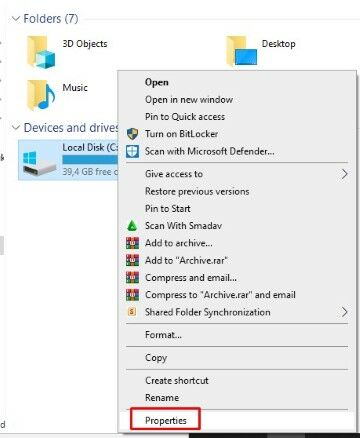
~bt directories, or the entire directories have been deleted.
Files have been manually deleted from windows.old or. A Refresh procedure has been performed. The computer must be plugged in and receiving AC power. IMPORTANT: The Go back feature can fail if one or more of the following is true: Once the rollback is completed, your PC will automatically restart and load your previous version of Windows. NOTE: After the 30 day window has passed, the Go Back feature will no longer appear in the Update & security screen. It can be anything between 10 minutes and several hours. The amount of time needed will depend on the data that is stored on your computer, your hardware's performance, etc. Do not turn off or unplug your computer during the downgrading process. Follow the on-screen instructions and select Go back to Windows 7/8.1. Microsoft will then ask for your feedback about Windows 10. Advanced Startup: Here you can change your PC startup settings, restore Windows from a system image, boot from a disc or USB device, etc. Go back to : This will restore your previous version of Windows. Reset this PC: Delete everything and reinstall Windows 10.  In the Settings menu, select Update & security. Start by opening the Start menu and selecting Settings. Simply follow the procedure described below to return to Windows 7 or Windows 8.1: If you ran into a low disk space scenario and used an external USB storage to complete the original upgrade to Windows 10, you will need the same USB storage device to perform the Go back procedure. Any system or settings changes made to the computer after the Windows 10 upgrade will be lost.
In the Settings menu, select Update & security. Start by opening the Start menu and selecting Settings. Simply follow the procedure described below to return to Windows 7 or Windows 8.1: If you ran into a low disk space scenario and used an external USB storage to complete the original upgrade to Windows 10, you will need the same USB storage device to perform the Go back procedure. Any system or settings changes made to the computer after the Windows 10 upgrade will be lost.  Applications installed (or removed) after the Windows 10 upgrade will need to be re-installed. If you haven't already done so before upgrading to Windows 10, we strongly recommend making a backup of all your data before you start the downgrading process. If you were using a password to sign into your Windows 7 or 8.1 session, make sure you know that password. Full installations of Windows 10 "from scratch" will only let you return to previous builds of Windows 10. You can only perform a rollback to your previous version of Windows if you installed Windows 10 as an upgrade from Windows 7 or Windows 8.1.
Applications installed (or removed) after the Windows 10 upgrade will need to be re-installed. If you haven't already done so before upgrading to Windows 10, we strongly recommend making a backup of all your data before you start the downgrading process. If you were using a password to sign into your Windows 7 or 8.1 session, make sure you know that password. Full installations of Windows 10 "from scratch" will only let you return to previous builds of Windows 10. You can only perform a rollback to your previous version of Windows if you installed Windows 10 as an upgrade from Windows 7 or Windows 8.1.  You can only perform this operation within the first 30 days following the upgrade to Windows 10. Windows 10 comes with a Go Back feature that gives you a 30 days window to go back to your previous version of Windows (Windows 7 or Windows 8.1) - or a previous build of Windows 10 - if you need or want to do so after upgrading.
You can only perform this operation within the first 30 days following the upgrade to Windows 10. Windows 10 comes with a Go Back feature that gives you a 30 days window to go back to your previous version of Windows (Windows 7 or Windows 8.1) - or a previous build of Windows 10 - if you need or want to do so after upgrading.










